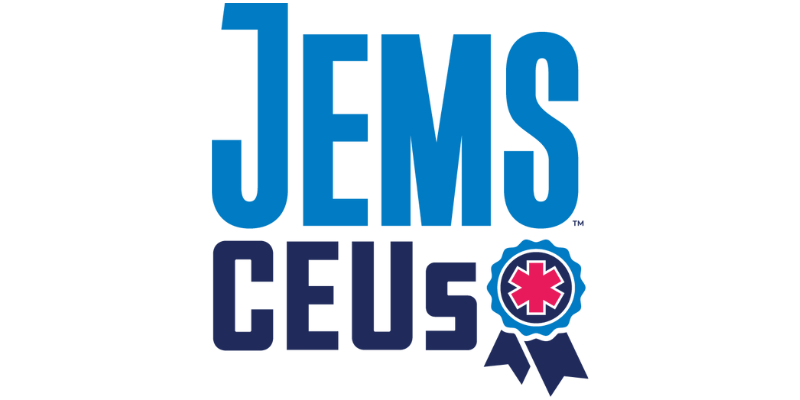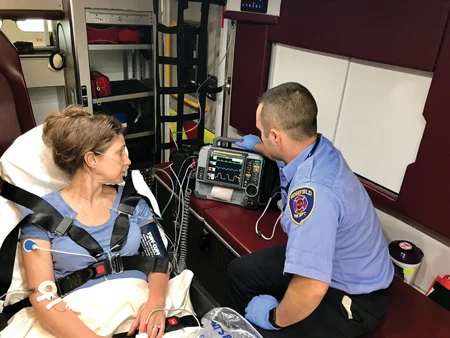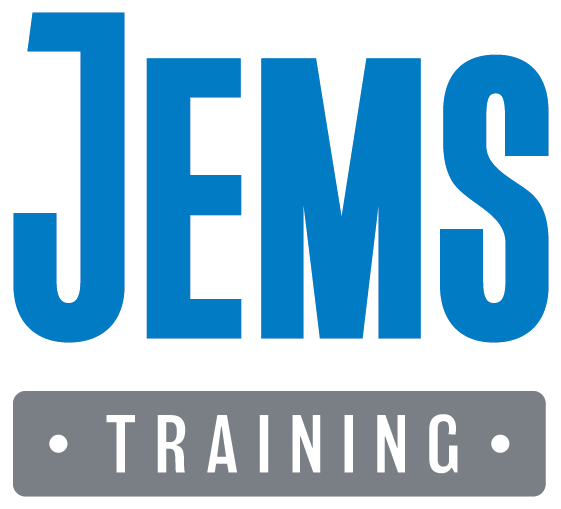
The Quick Way to Earn Credits
Meet your EMS recertification requirements with CAPCE-accredited articles.
JEMS CEUs
$10
1 Month
Earn 1 CEU by reading CAPCE-approved articles on JEMS Training and completing the final exam.
Membership
$49
1 Year
Unlock access to 100+ CEUs with courses covering critical EMS topics, including: Airway/Respiration/Ventilation, Trauma, Medical, Operations, and Cardiovascular.
Trauma: Fluid Resuscitation in Trauma Patients
Fluid resuscitation is a critical component in the management of hemorrhage and trauma.
This JEMS CEU course will discuss key components of fluid resuscitation, including the use of normal saline and crystalloids in trauma, prehospital hemorrhage resuscitation, fluid management in hemorrhagic shock, and the use of whole blood. This course will also examine the use of warm saline and rapid infusion techniques for prehospital blood transfusions. During this course, learners will evaluate the pros and cons of normal saline, heated saline, prehospital packed red blood cells (pRBC) with plasma, whole blood, and crystalloid infusion.

Number of CEUs Granted: 1
Estimated Reading Time: 1 hr
National Registry Category: Trauma
Three Reasons Not to Use Normal Saline or Crystalloids in Trauma
By: Andrew D. Fisher, MPAS, PA-C and Brandon M. Carius, MPAS, PA-C
A Review of Prehospital Hemorrhage Resuscitation
By: Angela Liszewski, DMSc, MPAS, PA-C
Prehospital Fluid Management in Hemorrhagic Shock
By: Hunter Pyle, BBA, Gilberto A. Salazar, MD, Reed Macy, BA, Raymond L. Fowler, MD, FACEP, FAEMS
Whole Blood in EMS May Save Lives
By: Andrew D. Fisher, MPAS, PA-C, Max Dodge, BS, NRP, EMT-P, Wren Nealy Jr., Eric A. Bank, LP, NRP, Dominic Thompson, EMT-P
Normal Saline: A Treatment Best Served Warm, Year-Round
By: Colin Bashline, BS, NRP
Rapid Infusion Techniques for Prehospital Whole Body Transfusions
By: Nicholas Studer, MD, NRP, David A. Miramontes, MD, C.J. Winckler, MD, LP, William Bullovk, EMT-P, Andrew Cap, MD
Airway: End-Tidal CO2 and Capnography
The importance of end-tidal CO2 (EtCO2) and capnography cannot be overstated for prehospital providers.
This JEMS CEU course discusses the importance of EtCO2 and how to use PQRST method for interpretation using clinical applications and examples. You’ll also delve into using EtCO2 to identify states of shock and inform pain management care. This course will also discuss capnography in EMS, including interpreting waveforms and using interpretations to inform your treatment for intubated and non-intubated patients. Lastly, you’ll learn the pros and cons of using tools (such as colorimetric devices, capnometry, and capnography) to confirm proper airway placement and the risks for not using them.

An end-tidal capnography waveform measures and displays the peak amount of CO2 at the end of exhilation.
Number of CEUs Granted: 1
Estimated Reading Time: 1 hr
National Registry Category: Airway
How to Read and Interpret End-Tidal Capnography Waveforms
By: Rommie L. Duckworth, LP
No Longer a Single-Use Tool
By: Cory Hromatko, BS, NRP
Using EtCO2 to Make the Most of Your Pain Management Care
By: Thomas Krakeel, NRP, BS and Andrew Watson, NRP, BS
A Systematic Approach to Capnography Waveforms
By: Gina Farquharson, RRT-NPS, MBA, MS, CPPS and Gregory K. Spratt, BS, RRT, CPFT
Airway, Breathing or Consequences: Use Your Tools and Trust the Technology
By: John Pisowicz, RN, BSN, NRP, PI, Scott DeBoer, RN, MSN, CEN, CPEN, CCRN, CFRN, EMT-P, Michelle Webb, RN, MSN, CRNA, Michael Seaver, RN, BA, and Bob Page, MEd, NRP, CCP, NCEE
Airway, Breathing or Consequences: Medical-Legal Consequences of Airway Mismanagement
By: John Pisowicz, RN, BSN, NRP, PI, Scott DeBoer, RN, MSN, CEN, CPEN, CCRN, CFRN, EMT-P, Michelle Webb, RN, MSN, CRNA, Michael Seaver, RN, BA, and Bob Page, MEd, NRP, CCP, NCEE
Medical: Facial Weakness, Palsy, and Stroke
Facial weakness, palsy, and stroke are all serious medical conditions that can greatly affect an individual’s quality of life. The ability to communicate, eat, and perform everyday tasks can all be compromised when facial muscles are weakened or paralyzed. It is critical that providers are up to date with signs, symptoms, and additional considerations and risk factors for patients with these conditions.
This JEMS CEU course will examine how to differentiate between facial weakness caused by Bell’s Palsy vs. Acute Stroke, diseases that mimic stroke, as well as stroke evaluation and triage.

Learning how to properly diagnose a stroke is a matter of life and death. (Image: CanStockPhoto/focalpoint)
Number of CEUs Granted: 1
Estimated Reading Time: 1 hr
National Registry Category: Medical
Differentiating Facial Weakness Caused by Bell’s Palsy vs. Acute Stroke
By: Michael T. Mullen, MD and Caitlin Loomis, MD
Identifying Diseases that Mimic Strokes
By: Richard A. Walker, MD, FACEP, FAAEM
Weakness Unchecked: A Case of Severe Muscle Weakness
By: Joshua Nackenson, MD, NRP and Jonathan Brewer, MD
Nashville EMS Crew Alertly Activates Stroke System
By: Jimmy Closser, BSN, RN, CEN, AEMT
EMS Industry Leader’s Story: Surviving Two Vertebral Artery Dissections
By: Anne Mullally
A Paradigm Shift in EMS Evaluation of Stroke
By: Coty Aiken, Lee Gillum, MPH, LP, EMS-CC, Jordan Anderson, Robert L. Dickson, Kevin Crocker, and Guy R. Gleisberg, MBA, BSEE, NREMT-B, EMS-I
Stroke Triage: EMS Needs a Diagnostic Tool That Goes Beyond a Simple History & Physical Exam
By: Mark E.A. Escott, MD, MPH, FACEP
Three Things All EMS Providers Can Do to Assist in the Timely and Accurate Administration of IV tPA in Cases of Acute Ischemic Stroke
By: Hunter R. Harbold LP, MPA, FP-C

